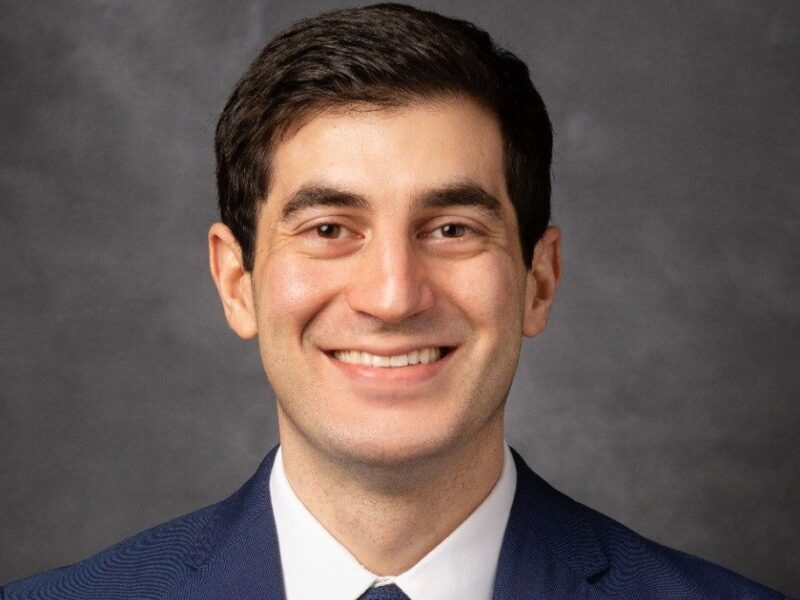
MD Anderson at ASTRO: Research Highlights Special Edition
The University of Texas MD Anderson Cancer Center’s Research Highlights showcases the latest breakthroughs in cancer care, research and prevention. These advances are made possible through seamless collaboration between
MD Anderson’s world-leading clinicians and scientists, bringing discoveries from the lab to the clinic and back.
This special edition features advances in radiation therapy approaches presented by MD Anderson researchers at the 2024 American Society for Radiation Oncology (ASTRO) Annual Meeting.
Regional nodal irradiation (RNI) is a radiation therapy method that targets the lymph nodes near the breast. RNI has improved breast cancer survival, but it also increases risk of lymphedema – swelling due to blockages in the lymphatic system – in upper extremities. In the randomized Phase III SAPHIRe trial, researchers led by Karen Hoffman compared hypofractionated RNI, which delivers higher doses of radiation in fewer sessions, to conventional radiation plans in 324 patients with invasive breast cancer.
When assessing by an infrared imaging technique called perometry, lymphedema was less common with hypofractionation relative to conventional plans, but the difference was not statistically significant. However, physician-assessed lymphedema was significantly lower in the hypofractionated group compared to the conventional group, at 15% and 27%, respectively.
Patients who received shorter-duration hypofractionated radiation were also less likely to experience adverse effects (52% compared to 78%), suggesting the hypofractionated approach may lessen side effects.

Patients with elevated prostate-specific antigen (PSA) levels who receive a prostactectomy also receive salvage radiation therapy and six months of a gonadotropin-releasing hormone (GnRH) agonist. Previously published data from the FORMULA-509 trial demonstrated that adding abiraterone acetate plus prednisone (AAP) and apalutamide (Apa) improved outcomes compared to bicalutamide in these patients who had PSA > 0.5 ng/ml.
New data, presented by Karen Hoffman describe health-related quality-of-life results in 345 patients through three years after treatment. Researchers used validated questionnaires to evaluate patient-reported hormonal functions, cognitive function and fatigue.
The study found that the addition of AAP and Apa improved overall outcomes without any decreases in patient-reported qualify of life, reinforcing the benefits of this combination approach.
Long-term data continues to support hypofractionation in localized prostate cancer (Abstract 185)
Patients with localized prostate cancer benefit from treatment with hypofractionation, which delivers higher doses of radiation in fewer sessions, but long-term impacts of this approach are poorly understood. In the final analysis of an MD Anderson Phase III randomized trial, Comron Hassanzadeh and colleagues examined long-term outcomes in 206 patients receiving either hypofractionated or conventionally fractionated radiation therapy. The initial benefits of hypofractionation remained after 10 years, with no increase in late toxicity.
The 10-year treatment failure rate for the hypofractionated group was nearly half that of conventionally fractionated group, at 11% and 21%, respectively. The difference in failure rate was more pronounced in those patients who did not receive androgen deprivation therapy (ADT), at 13% and 26%, respectively.
These findings suggest that hypofractionated radiation offers a clinical benefit without long-term added toxicity for patients with localized prostate cancer, especially among those not receiving ADT.

Previous data suggest intensity modulated photon therapy (IMRT) and passive scattering proton therapy (PSPT) achieve similar outcomes for patients with inoperable non-small cell lung cancer receiving concurrent chemotherapy, but long-term differences remain unknown.
A new 10-year follow-up study, led by Tingshi Su and colleagues, found that long-term outcomes were consistent with the original trial report, with no significant difference in local recurrence, overall survival and distant metastasis-free survival between the two treatment groups.
Additionally, there was not a statistically significant difference in toxicities, including radiation pneumonitis, high grade esophageal adverse events and cardiac adverse events. Although most outcomes were similar, there was a lower incidence of major cardiac adverse events in the proton group, highlighting that proton therapy can achieve similar clinical outcomes to IMRT with a generally better safety profile.

Human papillomavirus (HPV)-related cancers currently have no Food and Drug Administration (FDA)-approved immunotherapies. However, these cancers express the unique HPV-related proteins E6 and E7, presenting viable therapeutic targets.
In the Phase II IMMUNOCERV trial, Adam Grippin and colleagues investigated the novel HPV-specific vaccine PDS0101 – which targets E6/E7 – in combination with standard-of-care chemoradiation in 17 patients with locally advanced HPV-related cervical cancer.
Ten of 17 patients (59%) had a complete radiographic response at four-month follow-up, while five patients (29%) had a greater than 90% reduction in tumor volume at day 35. Grade 3 or higher adverse events occurred in eight patients. All patients who received five doses of PDS0101 were disease-free at 36 months, supporting continued investigation of this vaccine.

Patients receiving radiation therapy for human papillomavirus (HPV)-related oropharyngeal squamous cell carcinoma (OPSCC) can experience toxicities that require treatment de-escalation and can compromise outcomes, highlighting a critical need to identify biomarkers that predict treatment response. To evaluate potential biomarkers, Li Wang and colleagues analyzed 1,352 plasma samples from 155 patients with HPV-related OPSCC enrolled in a randomized Phase III study comparing conventional radiation to proton therapy.
The researchers examined HPV DNA from the tumor, known as tumor tissue-modified viral (TTMV)-HPV DNA, as a circulating blood biomarker. Specifically, they evaluated whether initial clearance of this DNA and subsequent detection – a reverting positive (RP) score – could predict treatment failure. An RP score was strongly correlated with treatment failure in their analysis.
Further, the median time before TTMV-HPV DNA reappeared was significantly shorter than the median time to identifying treatment failure via imaging, suggesting this biomarker’s potential to predict treatment responses earlier.

Honors and awards
Aileen Chen, Associate Professor of Radiation Oncology, Lilie Lin, Professor of Radiation Oncology, and Quynh-Nhu Nguyen, Professor of Radiation Oncology, were inducted into the 2024 Class of ASTRO Fellows.

The following investigators were honored by the ASTRO Annual Meeting Steering Committee based on their abstracts’ peer-reviewed scores:
Benjamin Schrank was awarded a Basic/Translational Award in Biology for “A microbial-inspired antibody-drug conjugate unleashes macrophage functionalities” (abstract 266) on a first-in-class antibody-drug conjugate that primes cancer cells to trigger an immune response instead of targeting cancer cells directly.

Vincent Bernard Pagan was awarded an abstract award for “Characterizing Radiation Induced Subclonal Kinetics in Pancreatic Ductal Adenocarcinoma” (abstract 212) showing selective pressures on tumor subclones following stereotactic body radiation therapy (SBRT), allowing identification of molecular processes that could lead to characterization of novel targets for pancreatic ductal carcinoma.

Other posts featuring MD Anderson Cancer Center.
-
Challenging the Status Quo in Colorectal Cancer 2024
December 6-8, 2024
-
ESMO 2024 Congress
September 13-17, 2024
-
ASCO Annual Meeting
May 30 - June 4, 2024
-
Yvonne Award 2024
May 31, 2024
-
OncoThon 2024, Online
Feb. 15, 2024
-
Global Summit on War & Cancer 2023, Online
Dec. 14-16, 2023
